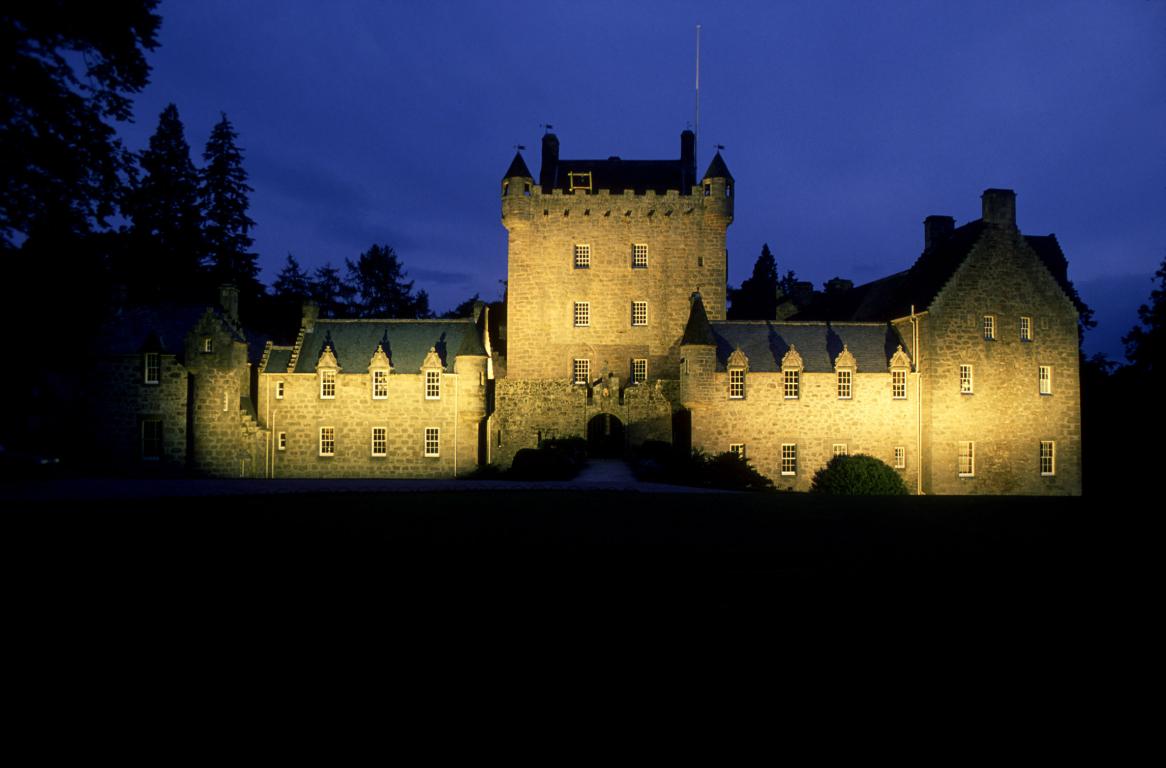
Cawdor Castle, Macbeth and a Ghost
By Melissa Davies
This story belongs to a ten-part series of stories gifted by Nairn Museum. Many thanks to Melissa Davies, the director of Nairn Museum, for kindly gifting these stories to the Spirit: Stories archive.
Cawdor is perhaps the best known of the Nairnshire parishes, partly due to Shakespeare's 'Macbeth' (the Scottish play). Cawdor was originally known as Calder, and the original occupiers were the Calders. The original wooden castle, near the hamlet of Brackla, was replaced in 1454 when the Thane, William, commissioned the large central stone tower after he dreamt that his donkey lead him to a new site for the castle. The donkey, which was laden with gold, lay down beside a holly tree, and it was at that spot that he built the castle. The remains of this tree can be seen in the lowest level of the tower. The iron gate of the castle came from nearby Lochindorb Castle, dismantled by William around 1455 on the orders of James II after it had been forfeited by the Earl of Moray. Successive Thanes added to the building.
 Cawdor Castle, Nairn
Cawdor Castle, NairnImage provided by VisitScotland/ Paul Tomkins
Cawdor Castle at night, lit by floodlights
The Thanedom of Cawdor was granted in 1310 by Robert I, and passed from father to son until Muriel Calder succeeded her father John in 1493. She was abducted as a child and in 1510, forced to marry Sir John Campbell of Argyll, from whence came the family name of Cawdor. Muriel lived until 1575, surviving her husband and son. The Campbell Lairds were often absentee landlords and a number of Factors ran their lands for them. In 1814, Alexander Stables became Factor. His son, William Alexander Stables, succeeded his father as Factor He was a great collector of natural history and was President of the Nairn Literary Institute.
***
Ghosts of Cawdor
It is said that a ghost wearing a blue velvet dress has been sighted wandering around the castle grounds. According to local legend this is none other than Muriel Calder. Her ghost has also been seen in the drawing room, gazing longingly at the portrait of the first Baron Cawdor. Another ghost is said to be that of her husband, John Campbell.
Macbeth
The name Cawdor still connects the castle to Shakespeare's 'Macbeth'. However, the story by Shakespeare takes extensive liberties with history. In the play, Macbeth, then Thane of Glamis, encounters three witches, the 'weird sisters', on the 'Blasted Heath'. They prophecised that Macbeth will become Thane of Cawdor and then King. Duncan makes Macbeth the Thane of Cawdor then Macbeth and his lady plot to murder Duncan in order to fulfil the prophecy. Duncan is slain in his sleep at Macbeth's castle in Inverness, an act that leads to Macbeth's downfall.
However, the truth is that Macbeth died around 130 years before the title, Thane of Cawdor, was granted, and over 300 years before the first stone was laid at Cawdor Castle. Macbeth was born around 1005 AD and ruled Scotland from 1040 to 1057 AD. Macbeth's Hillock near Brodie Castle, between Forres and Nairn, is traditionally identified as the 'Blasted Heath', the meeting place of Macbeth and the witches.
We Want to Hear From You!
Share your stories and memories of Nairn
Stories are at the heart of what we do as a project and we are always looking to learn more about what the Highlands and Islands means to people who live, work, and visit here. Nairn is an iconic part of the Highlands, with a rich natural and cultural heritage to discover. We would love to know, what are some of your favourite memories or stories related to Nairn? Tell us below, we can't wait to hear from you!
Click here to share your story through our online story portal